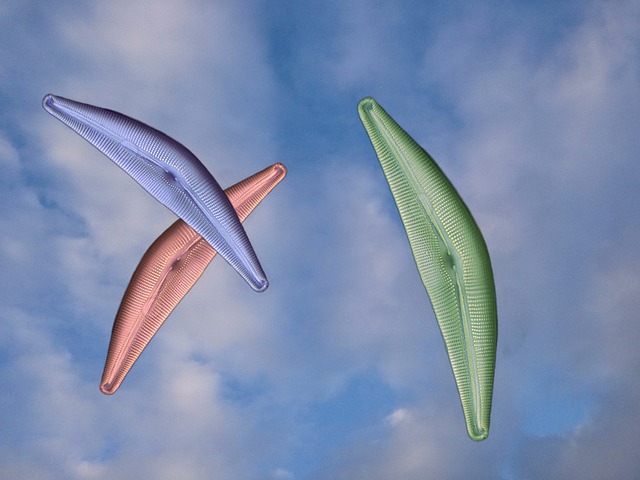As climate change continues to manifest in increasingly tangible and alarming ways, the intricate world of diatoms emerges as a beacon of hope and an essential component in understanding our planet’s delicate ecosystems. Diatoms, microscopic algae with intricate silica cell walls, play a crucial role in the environment, particularly in oceans and freshwater habitats. In a world slowly melting under rising temperatures, these tiny powerhouses offer insight into both ecological resilience and the impacts of global warming.
Diatoms are responsible for producing a substantial portion of the Earth’s oxygen—about 20%—through the process of photosynthesis. This remarkable capability not only supports marine life but also contributes significantly to the air we breathe. However, as ocean temperatures rise and acidity levels increase due to higher carbon dioxide emissions, the survival and proliferation of diatoms could be jeopardized. The delicate balance of their habitats is threatened, potentially leading to declines in their populations, which would have a cascading effect on the entire food web.
In times of climate change, the role of diatoms extends beyond oxygen production. They are also vital indicators of environmental health. Scientists closely monitor diatom populations and communities to assess water quality and the impact of climate change on aquatic systems. The abundance or decline of specific diatom species can signal subtle shifts in ecological conditions. By studying these patterns, researchers can gain insights into broader environmental trends, which are critical for developing effective conservation strategies.
Moreover, diatoms contribute to carbon sequestration. When they die, their silica shells sink to the ocean floor, effectively trapping carbon that might otherwise contribute to greenhouse gas concentrations in the atmosphere. This natural process highlights the importance of preserving diatom-rich ecosystems, as they serve as carbon sinks, cushioning the impact of climate change. Protecting and restoring these habitats can enhance their ability to capture carbon, making diatoms instrumental in our fight against global warming.
As we reflect on our changing world, we must appreciate the vital role diatoms play in both maintaining ecological balance and providing us with a clearer understanding of environmental change. Their existence is a reminder of the interconnectedness of life on Earth—how the tiniest organisms can influence grand climatic narratives. By safeguarding diatom populations, we are not just conserving an essential species; we are investing in a sustainable future for our planet amidst the melting challenges of a warming climate.
In a melting world, where ice caps recede and ecosystems shift, acknowledging the significance of diatoms is crucial. They embody the resilience of nature, yet their fate is entwined with our actions. As we strive to combat climate change, let us not overlook these minuscule entities that have a monumental impact on the environment. The path forward requires understanding and respecting these natural wonders while taking action to mitigate the forces threatening our planet’s delicate balance.



